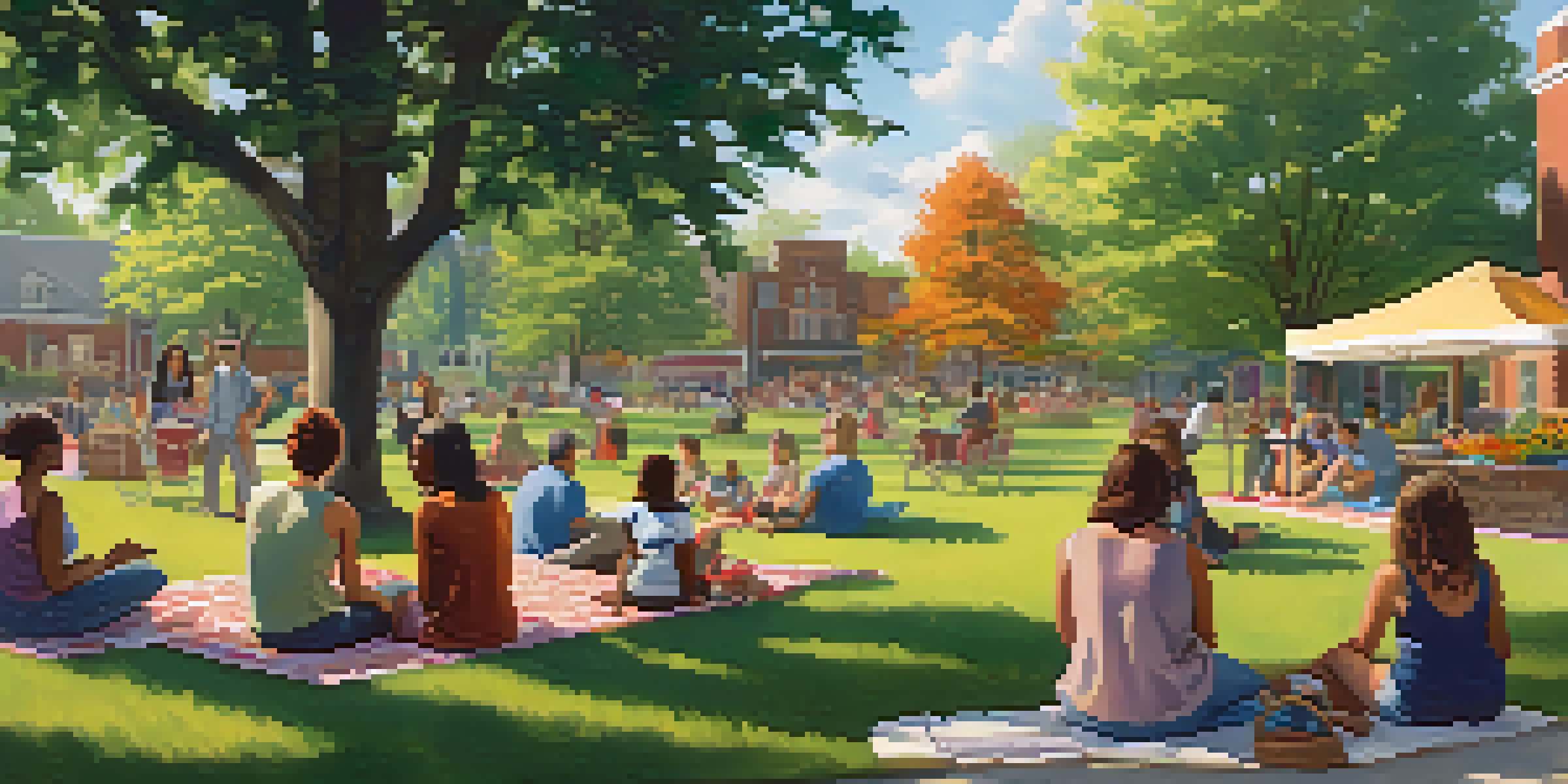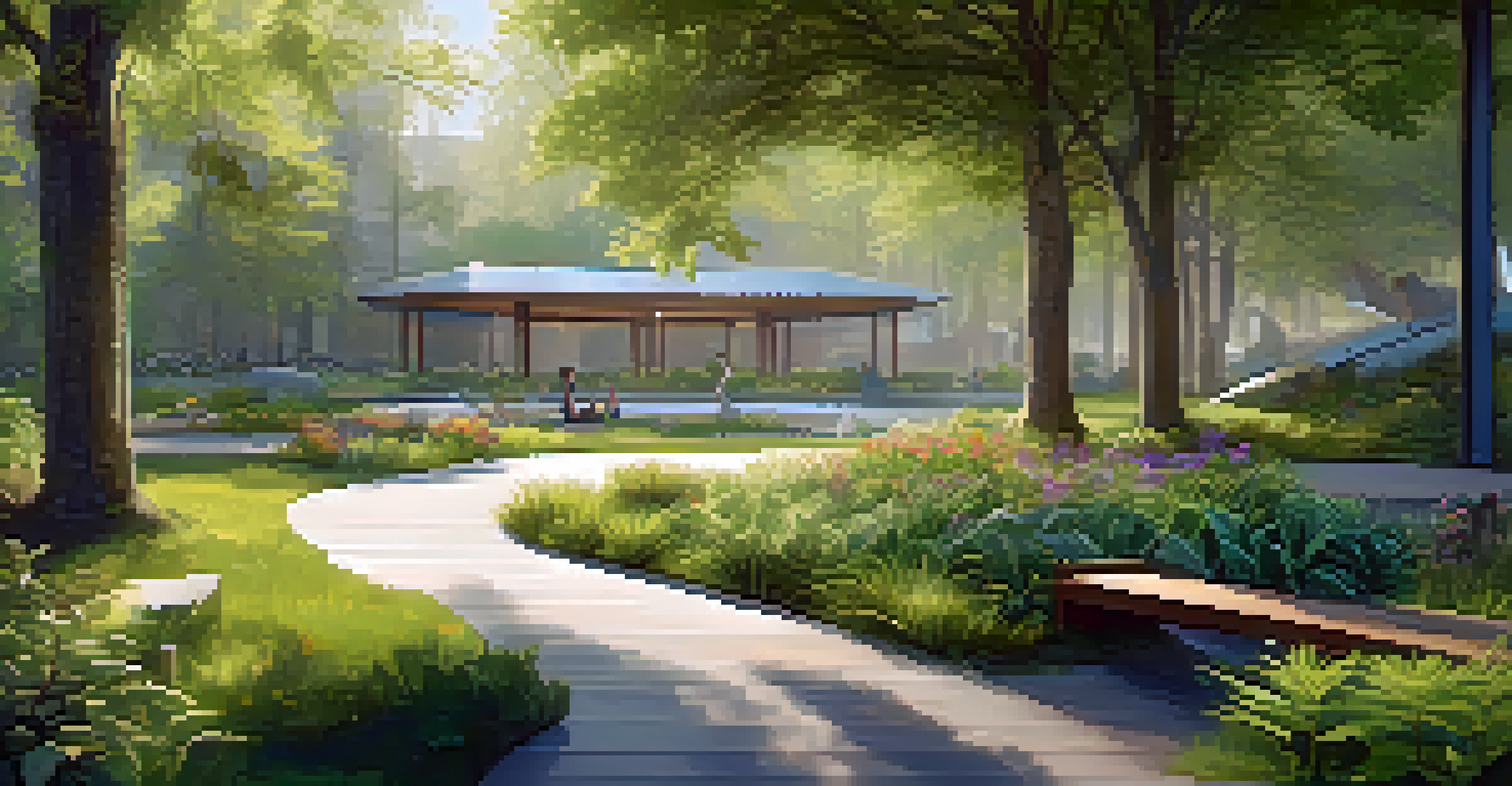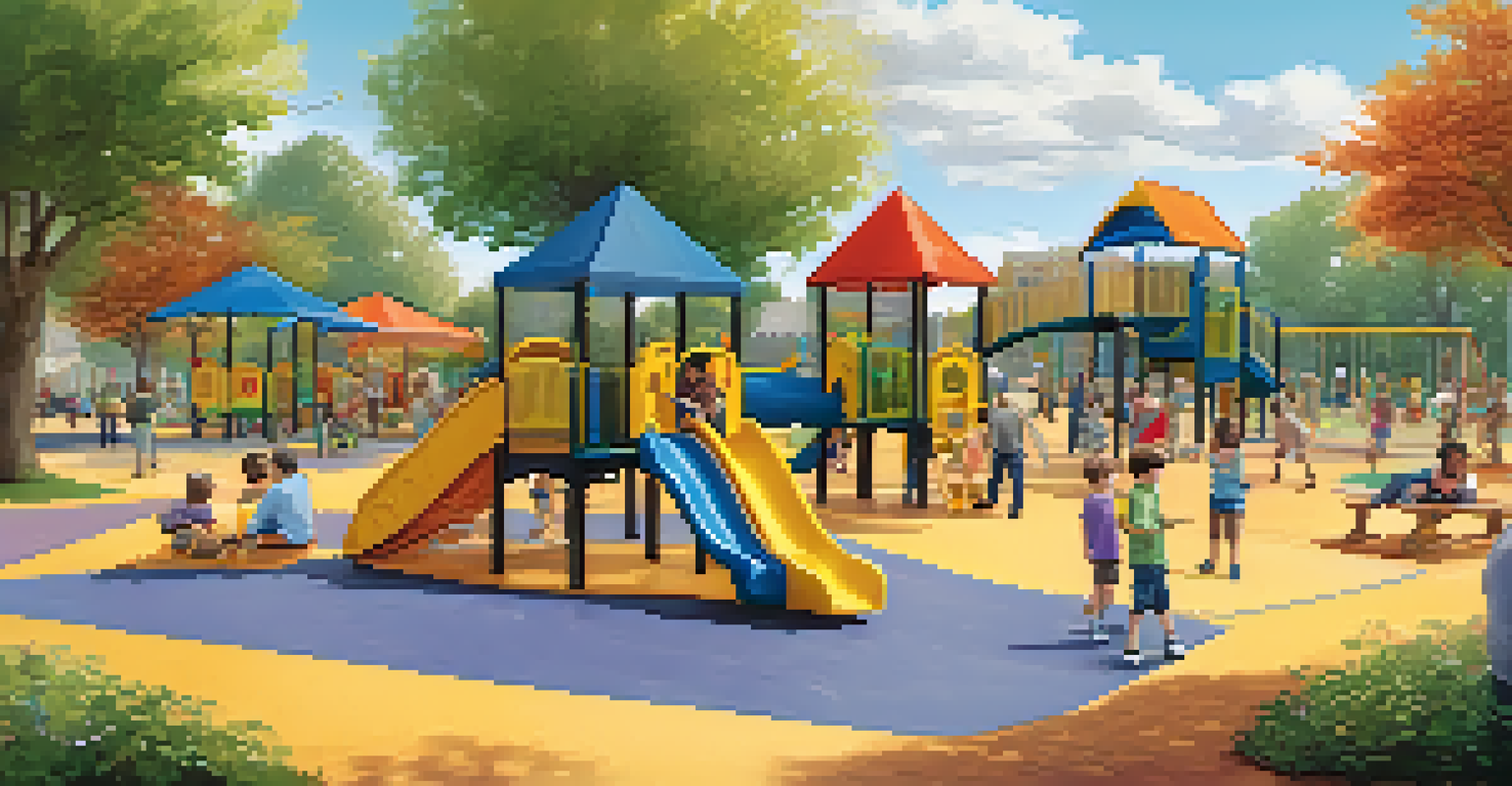Outdoor Community Spaces: Trends for Gathering Places

The Rise of Multi-Functional Outdoor Spaces
In recent years, there's been a notable shift towards designing outdoor community spaces that serve multiple purposes. Rather than creating a park solely for play, cities are now integrating features like seating areas, gardens, and performance stages. This transformation allows for a more dynamic environment where people can gather for various activities, from picnics to concerts.
Parks are not just places to play, they are places to connect, to grow, and to thrive within our communities.
These multi-functional spaces invite diverse groups of people, promoting inclusivity and community interaction. For instance, a park might host a farmer's market on weekends, yoga classes during the week, and family-friendly movie nights in the summer. Such versatility not only maximizes the use of the area but also fosters a sense of belonging among residents.
Additionally, the appeal of these spaces lies in their ability to adapt over time. As community needs evolve, these areas can be reconfigured or updated to accommodate new trends and activities, ensuring they remain relevant and engaging for all.
Incorporating Nature with Biophilic Design
Biophilic design is gaining traction in outdoor community spaces, emphasizing the connection between nature and well-being. This approach integrates natural elements, such as trees, water features, and native plants, creating a serene atmosphere that promotes relaxation and social interaction. Imagine walking through a park filled with vibrant flowers and the soothing sounds of a nearby stream – it’s a recipe for rejuvenation.

By harnessing the calming effects of nature, these spaces not only enhance aesthetic appeal but also contribute to mental health. Studies have shown that spending time in green environments can reduce stress and anxiety. Thus, communities are increasingly prioritizing designs that incorporate greenery, ensuring everyone benefits from nature's restorative powers.
Furthermore, biophilic design encourages environmental stewardship among residents. When people engage with nature in their local spaces, they tend to develop a greater appreciation for their surroundings, leading to more sustainable practices within the community.
Community-Centric Events: A Key Trend
Outdoor community spaces are becoming vibrant hubs for events that foster local engagement. From food festivals to art fairs, these gatherings bring residents together, creating a sense of camaraderie and shared experience. Just think of a community BBQ where neighbors gather, share stories, and connect over delicious food – it’s a bonding experience that strengthens community ties.
The future will not be about technology alone; it will be about the integration of technology into the natural world we cherish.
These events not only celebrate local culture but also provide opportunities for small businesses and artists to showcase their talents. By hosting pop-up markets or live performances, communities can support local economies while enriching the social fabric. The buzz and excitement of these events often encourage even passive participants to get involved and enjoy the atmosphere.
Moreover, the inclusion of diverse events caters to a variety of interests, ensuring that everyone feels welcome. Whether it's a yoga class at dawn or a nighttime film screening, these activities invite participation from all age groups, making outdoor spaces truly inclusive.
Sustainable Features in Community Spaces
Sustainability is a growing focus in the development of outdoor community spaces. As awareness of environmental issues rises, many communities are incorporating eco-friendly features such as solar lighting, rain gardens, and recycled materials. These thoughtful design choices not only minimize environmental impact but also educate residents about sustainability.
For example, installing solar panels provides renewable energy for lighting, reducing reliance on traditional power sources. Rain gardens help manage stormwater runoff while also providing habitats for local wildlife. Such features demonstrate a commitment to environmental responsibility, inspiring community members to adopt more sustainable practices in their daily lives.
In addition, these eco-friendly spaces often become educational platforms where workshops and events can teach residents about sustainability. By engaging the community in these initiatives, outdoor spaces serve as a catalyst for positive environmental change.
Technology Integration: Smart Outdoor Spaces
The integration of technology into outdoor community spaces is reshaping how we interact with our environment. Wi-Fi access, smart lighting, and digital kiosks are just a few examples of how technology is enhancing the user experience. Imagine being able to check local events on a digital screen while enjoying a sunny day at the park – it keeps people informed and engaged.
Moreover, technology can facilitate community involvement through apps that allow residents to report maintenance issues or suggest improvements. This direct line of communication ensures that the needs of the community are met promptly, fostering a sense of ownership among residents. When people feel their voices are heard, they are more likely to participate in community activities.
However, it's essential to strike a balance between tech integration and maintaining a natural atmosphere. The goal is to enhance the outdoor experience without overwhelming it, ensuring that technology complements rather than dominates the space.
Inclusive Design: Spaces for Everyone
Inclusive design is a crucial aspect of creating successful outdoor community spaces that cater to all demographics. This approach considers accessibility for individuals of all abilities, ensuring that everyone can enjoy these environments. Features like wheelchair-friendly paths, sensory gardens, and signage in multiple languages help foster inclusivity.
By prioritizing inclusivity, communities can create spaces that encourage participation from diverse groups. For example, a playground designed with adaptive equipment allows children of all abilities to play together, promoting friendships and understanding among peers. Such thoughtful design choices empower individuals and reinforce a sense of community.
Additionally, inclusive spaces often become gathering points for various cultural events, reflecting the community’s diversity. By celebrating different traditions and backgrounds, these spaces can foster a sense of belonging for everyone, making them truly valuable assets.
The Future of Outdoor Community Spaces
As we look to the future, the evolution of outdoor community spaces will continue to reflect societal changes and preferences. Trends such as increased environmental consciousness, a focus on wellness, and a desire for community interaction will shape how these spaces are designed. The ongoing adaptation to these trends ensures that outdoor areas remain relevant and engaging.
Moreover, the pandemic has highlighted the importance of outdoor spaces for socializing and mental health. Communities are likely to prioritize open-air environments that facilitate safe gatherings, making these spaces even more integral to our lives. This shift emphasizes the value of outdoor community spaces as essential components of urban living.

In conclusion, the future of outdoor community spaces looks promising, with an emphasis on sustainability, inclusivity, and technology. These trends not only enhance the quality of life for residents but also create vibrant, welcoming environments where everyone can come together to connect, learn, and grow.